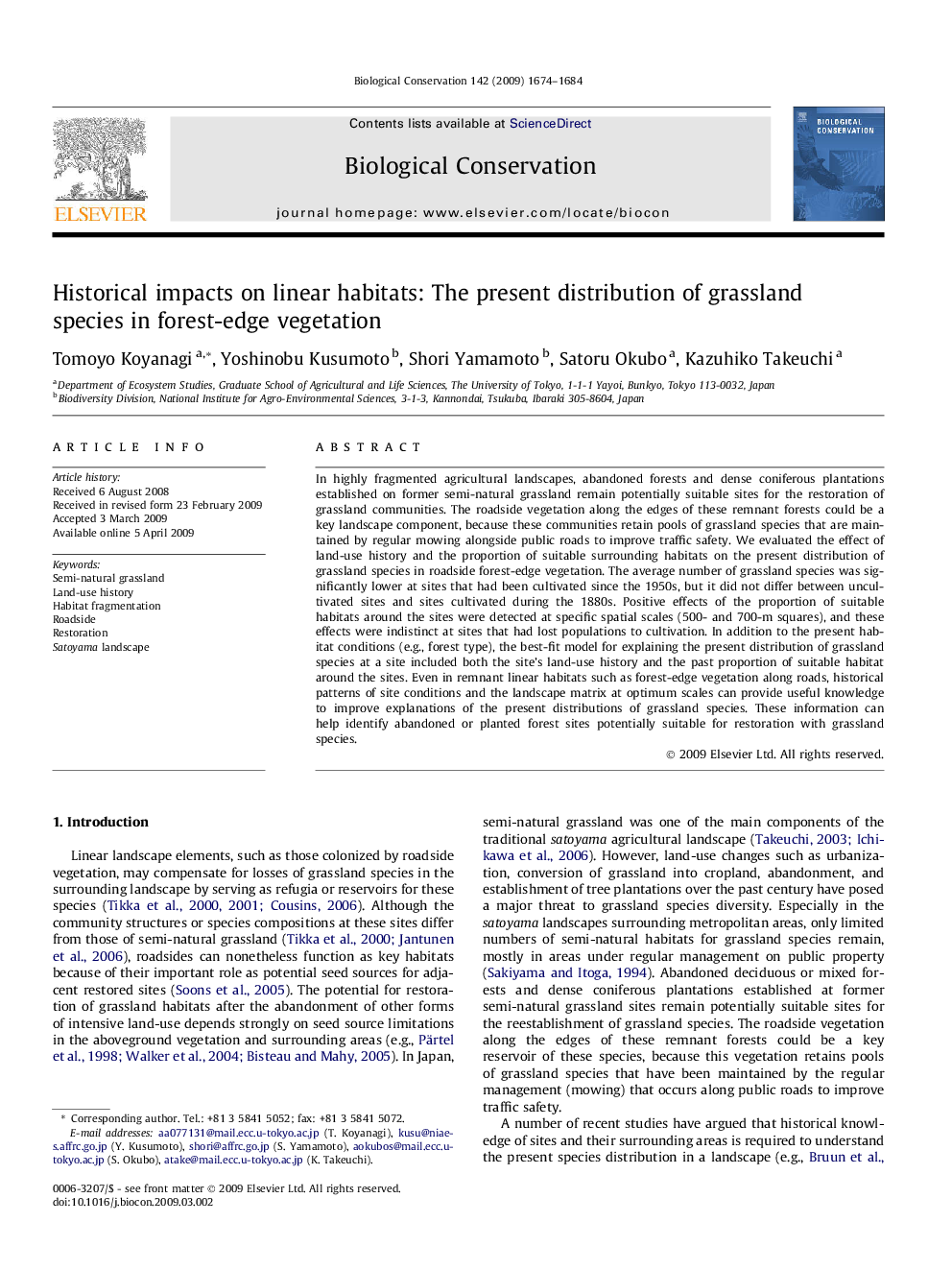| Article ID | Journal | Published Year | Pages | File Type |
|---|---|---|---|---|
| 4386251 | Biological Conservation | 2009 | 11 Pages |
In highly fragmented agricultural landscapes, abandoned forests and dense coniferous plantations established on former semi-natural grassland remain potentially suitable sites for the restoration of grassland communities. The roadside vegetation along the edges of these remnant forests could be a key landscape component, because these communities retain pools of grassland species that are maintained by regular mowing alongside public roads to improve traffic safety. We evaluated the effect of land-use history and the proportion of suitable surrounding habitats on the present distribution of grassland species in roadside forest-edge vegetation. The average number of grassland species was significantly lower at sites that had been cultivated since the 1950s, but it did not differ between uncultivated sites and sites cultivated during the 1880s. Positive effects of the proportion of suitable habitats around the sites were detected at specific spatial scales (500- and 700-m squares), and these effects were indistinct at sites that had lost populations to cultivation. In addition to the present habitat conditions (e.g., forest type), the best-fit model for explaining the present distribution of grassland species at a site included both the site’s land-use history and the past proportion of suitable habitat around the sites. Even in remnant linear habitats such as forest-edge vegetation along roads, historical patterns of site conditions and the landscape matrix at optimum scales can provide useful knowledge to improve explanations of the present distributions of grassland species. These information can help identify abandoned or planted forest sites potentially suitable for restoration with grassland species.
